Have you ever wondered why carnelian, a fiery reddish-orange gemstone, has captivated people for thousands of years? Revered by ancient civilizations like the Egyptians and the Romans, carnelian was often worn as a talisman for courage and protection. It’s more than just a pretty stone—carnelian has deep roots in history, adorned royalty, and inspired legends. Join me in learning more about this lovely gem.
Historical Significance of Carnelian
Ancient Egypt
In ancient Egypt, carnelian was a symbol of life and protection. Egyptians crafted carnelian into stunning jewelry and amulets, associating its vibrant color with blood and power. It was often placed in tombs as a guide for the dead in the afterlife. The stone was closely associated with the goddess Isis, the protector of the dead and the giver of life.
Mesopotamia
Traveling across to Mesopotamia, carnelian played a pivotal role in the creation of seals, which were used to sign documents and act as a mark of authenticity. The Mesopotamians believed that carnelian seals could prevent misfortune and bring good luck. Additionally, carnelian was traded extensively.
India and Carnelian in Art
Indian artisans used carnelian to create intricate carvings and beads, showcasing their incredible skill and creativity. The stone was often shaped into beads for necklaces and bracelets, emphasizing its aesthetic and spiritual allure. In Indian culture, carnelian was also believed to provide protection and courage, adding an extra layer of meaning to its artistic use.
Roman and Greek Usage
In Roman and Ancient Greece carnelian was thought to have protective properties that warded off evil and brought good fortune. Signet rings, often carved from carnelian, allowed the wearer to imprint their mark on wax seals. For these ancients, carnelian was a gem of both beauty and belief.
Physical Properties of Carnelian
Carnelian belongs to the chalcedony family, which is part of the quartz group. Its chemical formula is primarily silicon dioxide (SiO₂). What sets carnelian apart from other chalcedony stones is the presence of iron oxide impurities. These impurities not only color the stone but also influence its overall look and feel. Many other gems from the quartz family feature bands or swirls. Carnelian is primarily more solid, except in the instances where it is combined with other gems like druzy. I tend to work with the Carnelia gems I source from Indonesia. They provide a more unusual gem for my designs.
Color Variations
Why do carnelians vary in color? Their hues range from light orange to deep red, depending on the amount of iron oxide present. More iron oxide means deeper reds, while less results in lighter oranges or yellows. Ever notice that some carnelians have a cloudy appearance? That’s due to iron particles not fully dissolved during formation, creating unique patterns. Another gem you may have heard of is SARD. This is actually carnelian with darker hues. Sardonyx is a quartz gem that is a compilation of onyx and carnelian
The array of colors can be summarized as follows:
- Pale Orange: Minimal iron content.
- Medium Orange: Balanced iron levels.
- Deep Red: High concentration of iron oxide.
This spectrum of colors allows designers to create varied and visually striking jewelry.
Hardness and Durability
On the Mohs hardness scale, carnelian scores a 7. This means it’s pretty tough, capable of enduring everyday wear and tear. It’s this robustness that makes carnelian an excellent choice for multiple types of jewelry, from rings and pendants to bracelets and brooches. Ever wonder why some stones look brand new after years of use? It’s because of their hardness, and carnelian is no exception. Its resilience allows it to resist scratches and maintain its beauty over time.
So, when considering carnelian for your next piece of jewelry, know that it’s not just its beauty that appeals but its ability to withstand the test of time as well.
My experience with Carnelian.
This gem is especially fun to work with. It’s hardness makes it great for my cuff or ring designs, too. Plus the brilliant orange color complements so many of my other gemstones. I love combining it with moonstone, onyx, turquoise and malachite. I find new combinations constantly. that being said, carnelian as a stand-alone gem is very popular with my customers. Each of my designs is one of a kind. I love knowing that the design you choose to purchase from me is the only one of it’s kind.
Spiritual and Healing Properties
Carnelian, often referred to as the “artist’s stone,” is famous for its spiritual and healing properties. It’s believed to ignite creativity and bring a burst of motivation. Do you sometimes feel stuck or uninspired? Many turn to carnelian to kickstart their creative juices.
In the realm of healing, carnelian is linked with the root and sacral chakras, which are all about grounding and passion. It’s thought to:
- Boost Confidence: Helping individuals to speak their truth without fear.
- Enhance Energy Levels: Acting like a shot of espresso for the soul to keep you going through life’s marathon.
- Promote Courage: Enabling people to take bold steps and embrace change.
Carnelian is more than just a fashion statement or a historical curiosity. It’s a vibrant, versatile gem that’s weaving through modern life, capturing the interests of both jewelry fans and spiritual seekers alike. Does it make you curious about the stories each stone holds? That’s the allure of carnelian—past and present coming together in harmony.
Caring for Carnelian
Imagine owning a beautiful piece of carnelian jewelry, its deep red hues shining brightly. But how do you keep it looking brand new? Caring for carnelian might seem tricky, but with the right steps, it’s simpler than you might think.
It is best to keep carnelian out of the sun for long periods. It is not as susceptible as some other gems, but play on the safe side, please. Take care not to wear carnelian OR any of your gems while swimming.
Storage Tips
Follow these guidelines to keep your design fresh for years.
- Separate Compartments: Store carnelian pieces separately or in soft-lined compartments. This prevents them from rubbing against harder stones or metals, which can cause scratches.
- Fabric Pouches: Use fabric pouches to protect your stones. Not only do these keep them safe, but they also make it easy to carry them wherever you go.
- Cool, Dry Places: Keep your carnelian away from direct sunlight and moisture, which can affect its color and structure over time.
Conclusion
Culturally, carnelian has represented courage, creativity, and transformation across various civilizations. Its role in rituals and adornments underscores its enduring appeal.
Consider adding a carnelian piece to your collection. Its allure continues to captivate, bridging past and present with its timeless glow. Explore more about these powerful stones and see what connections you might find to your personal history. Feel free to share your thoughts or experiences with carnelian in the comments.
Follow me on my design journey and become a collector. Not only do my collectors receive first look at my newest designs but the also have the advantage of Collector-only discounts and specials. It’s Free. In addition you Get 15% off your first order.
Here’s How
Shop Here for all my Designs

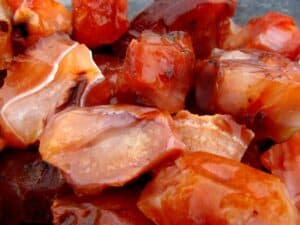
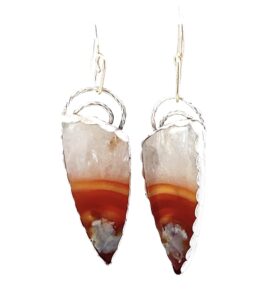
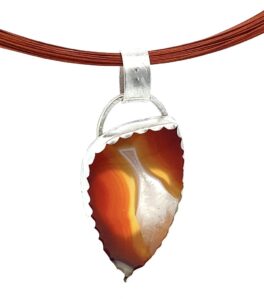

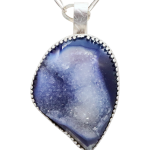


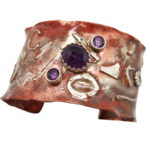


Great read! I’ve always loved this stone and learned so much more from reading this. Always good to hear about things like color, combinations, properties – both physical and metaphysical. This article covered it all, while also providing practical tips like how to care for the stone. Inspiring, thanks for sharing! ❤️🙏
Thanks so much, Kristen. I do love learning about each of these gems. Appreciate your comment.